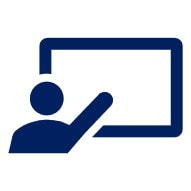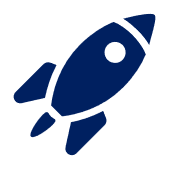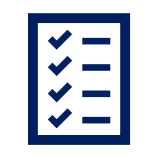Agilesys helps organizations implement SAFe®
Scaled Agile Framework or SAFe, is the most established and well-documented approach for implementing Agile. The established roadmap is a step-by-step guide for becoming Agile. Though not all organizations follow the roadmap completely, Agilesys can facilitate the best implementation for your enterprise.
Scaled Agile Framework or SAFe, is the most established and well-documented approach for implementing Agile. The established roadmap is a step-by-step guide for becoming Agile. Though not all organizations follow the roadmap completely, Agilesys can facilitate the best implementation for your enterprise.
By following the SAFe® roadmap, Agilesys guides companies through 10 steps:
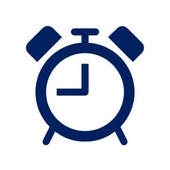
Step 1: Reaching the Tipping Point
Changing the way of working—both the habits and culture of a large development organization—is hard.
It’s easy for people to keep their old behavior—unless there is an exceptionally good reason to make such a change. A reason so compelling that the status quo becomes simply unacceptable. A reason so strong that change becomes the only reasonable way forward to success.
In other words, the enterprise must reach its “tipping point” - the point at which the overriding organizational imperative is to achieve the change, rather than resist it.
Changing the way of working—both the habits and culture of a large development organization—is hard.
It’s easy for people to keep their old behavior—unless there is an exceptionally good reason to make such a change. A reason so compelling that the status quo becomes simply unacceptable. A reason so strong that change becomes the only reasonable way forward to success.
In other words, the enterprise must reach its “tipping point” - the point at which the overriding organizational imperative is to achieve the change, rather than resist it.
|
Step 2: Train Lean-Agile Change Agents
Once an organization reaches its tipping point and the rationale for a significant change becomes obvious the difficult journey begins. To create a SAFe® coalition that is sufficiently powerful to initiate change, our experience shows that the organization must take three critical steps:
|
|
Step 3: Train Executives, Managers, Leaders
Strong leadership is needed to successfully implement any change in an organization. In the context of SAFe, some of these leaders will provide direct and ongoing sponsorship for the change by participating in the LACE – while others will be directly involved in implementing SAFe, or be leading, managing, and influencing the other players in the transformation. All of these stakeholders need the knowledge and skills to lead – rather than follow – the implementation. |
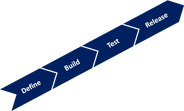
Step 4: Identify Value Streams & ARTs
A value stream is a primary construct for understanding, organizing, and delivering value in SAFe. Each value stream is a long-lived series of steps used to create value- from concept to the delivery of a tangible result for the customer.
For some organizations, identifying operational value streams is easy. Many are just the products, services, or solutions that the company develops and sells. In the larger enterprise, however, the task is more complicated. Value flows through various applications, systems, and services, - cross many parts of the distributed organization.
A value stream is a primary construct for understanding, organizing, and delivering value in SAFe. Each value stream is a long-lived series of steps used to create value- from concept to the delivery of a tangible result for the customer.
For some organizations, identifying operational value streams is easy. Many are just the products, services, or solutions that the company develops and sells. In the larger enterprise, however, the task is more complicated. Value flows through various applications, systems, and services, - cross many parts of the distributed organization.

Step 5: Create the Implementation Plan
After leaders have been trained and they begin applying their new knowledge, enterprise stakeholders start to identify strategies for implementing this new way of working. This requires real and tangible changes to individual and organizational behavior. Creating the plan involves three activities.
After leaders have been trained and they begin applying their new knowledge, enterprise stakeholders start to identify strategies for implementing this new way of working. This requires real and tangible changes to individual and organizational behavior. Creating the plan involves three activities.
- Pick the first value stream
- Select the first ART
- Create a preliminary plan for additional ARTs and value streams
|
Step 7: Train Teams & Launch ART
Agile teams are the people who actually build the systems needed by the business, so it’s important that they fully grasp what’s about to take place. They must have an understanding of their role in the ART and gain the Lean and Agile skills needed to be effective in their changing role. |
Step 8: Coach ART Execution
Agile teams are the people who actually build the systems needed by the business, so it’s important that they fully grasp what’s about to take place. They must have an understanding of their role in the ART and gain the Lean and Agile skills needed to be effective in their changing role.
Agile teams are the people who actually build the systems needed by the business, so it’s important that they fully grasp what’s about to take place. They must have an understanding of their role in the ART and gain the Lean and Agile skills needed to be effective in their changing role.
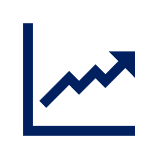
Step 10: Extend to the Portfolio
This is a telling point in the rollout. The organization’s commitment to transforming the business at all levels and becoming a truly Lean-Agile enterprise will be tested. Now is the time to expand the implementation to include maturing the enterprise’s Lean Portfolio Management competency and anchoring the new approach in the culture.
This is a telling point in the rollout. The organization’s commitment to transforming the business at all levels and becoming a truly Lean-Agile enterprise will be tested. Now is the time to expand the implementation to include maturing the enterprise’s Lean Portfolio Management competency and anchoring the new approach in the culture.
Step 11: Sustain and Improve
Improvement in quality, productivity, time-to-market, and employee engagement are meeting or exceeding expectation. So how do you sustain this over the long term? It’s important to recognize that culture change can lose momentum as the “new car smell“ of a new initiative begins to fade. To continue the practice of SAFe effectively, and ensure the ongoing engagement of the workforce, leaders must now expand their view of the implementation. They will need to maintain the energy and enthusiasm they are devoting to the short cycles of Iterations and Program Increments (PIs) while setting their sights on the distant horizon for long-term sustainability. The mindset and process of relentless improvement must now take root.
Improvement in quality, productivity, time-to-market, and employee engagement are meeting or exceeding expectation. So how do you sustain this over the long term? It’s important to recognize that culture change can lose momentum as the “new car smell“ of a new initiative begins to fade. To continue the practice of SAFe effectively, and ensure the ongoing engagement of the workforce, leaders must now expand their view of the implementation. They will need to maintain the energy and enthusiasm they are devoting to the short cycles of Iterations and Program Increments (PIs) while setting their sights on the distant horizon for long-term sustainability. The mindset and process of relentless improvement must now take root.

